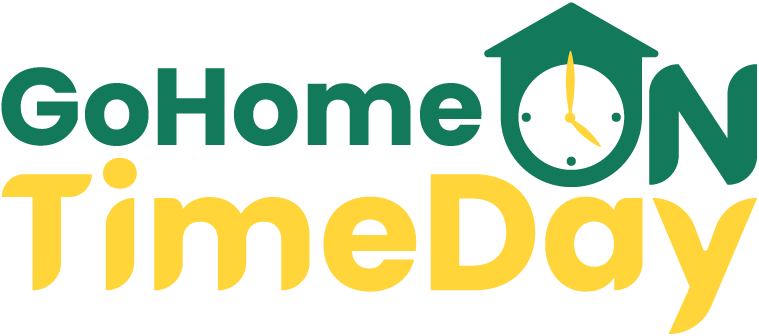Starting your path to becoming a reformative coach might seem like you’re exploring unknown territories – consider coaching framework examples as your guide and map. As an individual striving to be a coach, the abundance of different coaching techniques, each with its own unique philosophy and method, might be overwhelming.
However, this very diversity equips coaches with tools for various terrains they encounter while guiding clients towards personal growth and success.
Drawing upon my background in technology and ultra-marathoning resilience, I have distilled rigorous research into accessible wisdom. We’ll explore why frameworks like GROW and CLEAR aren’t just acronyms but beacons that light the path for goal achievement within coaching conversations.
Ready to gain insights that will carry your coaching abilities beyond boundaries? Let’s dive in—a world where potential meets performance awaits at every turn.
Key Takeaways
- Coaching frameworks like GROW and CLEAR help coaches guide clients to reach their goals. They provide steps and questions that make the coaching process clear.
- Different coaching models work best for different types of coaching, such as team, leadership, or individual growth. Coaches should choose a suitable model based on what is needed in each situation.
- Good coaches adapt their methods to fit the person or team they are helping. They use various tools from their toolkit to guide each session effectively.
- Combining coaching with mentoring can be very powerful. It mixes hands-on learning with advice from experience.
- Models like OSCAR and Steppa help put theory into practice by providing a structure for real-life coaching sessions. These models encourage setting goals, making plans, and checking progress along the way.
Introduction to Coaching Frameworks and Importance

As you embark on the transformative path of coaching, recognizing the profound impact a well-chosen framework can have is paramount. These guiding structures are more than mere tools; they serve as compasses, steering clients toward their fullest potential and elevating your practice to new heights of effectiveness.
Understanding the Concept of a Coaching Framework
A coaching framework acts like a map for guiding coaches. It helps you know where to start and how to move forward with your mentoring sessions. Think of it like following steps in a recipe—you gather ingredients, then mix them to make something great.
With a coaching framework, you have clear stages and tools to help someone grow or improve at work or in life. For example, using the GROW model, you ask questions about Goals, Reality, Options, and Will to guide the person through making changes.
This organized approach ensures essential elements are noticed and that each session builds on the next one toward reaching big goals.
The Role of Coaching Frameworks in a Successful Coaching Program
Coaching frameworks provide structure to conversations and help coaches guide their clients forward. Think of these frameworks as a map for your coaching journey. They show the path to follow, the obstacles to avoid, and how far you have come.
A good framework helps build a culture where coaching thrives within an organization. It ensures that every talk with team members moves them closer to their goals. Coaches use these plans as tools to focus on what matters most in each session.
They lead teams toward action and improvement, creating successful outcomes for everyone involved.
How a Coaching Framework Enhances Coaching Skills
Having a solid framework in place turns good coaching into great coaching. It’s like having a map for your journey; it guides your conversations with clients and ensures they’re moving forward.
A coaching framework helps you ask powerful questions that get to the heart of what people want to achieve. Using models like GROW or CLEAR gives structure to sessions, assisting clients to set clear goals and plan action steps.
These frameworks also sharpen your ability to listen carefully and give feedback that matters. With each directive or non-direct model, you learn new tactics for drawing out a client’s thoughts and desires.
These tools allow you to practice patience, build trust quickly, and tailor each session to fit the unique needs of every person you coach. As your skills strengthen with these frameworks, your ability to help others reach their full potential does, too.
A Deeper Look at Popular Coaching Models

Delve into the intricacies of time-tested coaching frameworks that have transformed countless individuals and organizations. Unearth the unique attributes of these models that cater to diverse coaching needs, from shaping leaders to boosting career trajectories.
Expanding Knowledge with the GROW Coaching Model
The GROW coaching model is like a map for your coaching journey. It guides you through four essential steps: setting Goals, examining Reality, exploring Options, and deciding what Will be done.
Imagine you’re helping someone who wants to become a better public speaker. You would start by setting clear goals on what ‘better’ means to them. Then, look at where they stand right now in their speaking skills.
Next comes the exciting part – exploring all the ways they could improve. Maybe they could practice more, find a mentor, or join a speaking club. Together, you’d pick the best options and then make a plan of action that includes when and how they will take these steps towards becoming an excellent speaker.
This model keeps the coach and learner focused on the goal and helps track progress.
Revealing the Revolutionizing Idea of the CLEAR Coaching Model
Coaches and those eager to guide others take note of the CLEAR coaching model. It stands out because it focuses on making every step count in a coaching conversation. George Brontén introduced this approach to highlight the importance of accountability, especially in sales coaching.
CLEAR stands for Contracting, Listening, Exploring, Action, and Review. This method helps you and your client understand each other better.
You start by agreeing on goals (Contracting) and then carefully listen to what they need (Listening). Next comes digging into their thoughts and feelings (Exploring), followed by planning what to do next (Action).
Finally, looking back at what worked or didn’t work well wraps up the process (Review). Using the CLEAR model supports your ability to lead impactful sessions that push clients toward their aspirations more effectively.
Now, let’s consider how these frameworks fit into various mentoring environments.
Comparing the Varying Types of Models: Instructional, Leadership, and Career
Understanding the nuances and applications of different coaching models helps you refine your approach to meet distinct needs. Whether guiding an individual toward personal achievements or steering a group toward collaborative success, the right framework can make all the difference. Let’s delve into how instructional, leadership, and career coaching models compare, each designed with specific contexts in mind.
| Coaching Model | Focus | Application | Commonly Used For |
|---|---|---|---|
| Instructional | Skills acquisition and development | Building competence in a particular area through practice and feedback | Teaching new skills, onboarding processes, and professional development |
| Leadership | Enhancing leadership abilities and organizational impact | Developing executive presence, strategic thinking, and decision-making | Executive coaching, management training, and team leadership development |
| Career | Personal career growth and job satisfaction | Aligning an individual’s goals with their professional trajectory | Career transitions, job promotions, and personal branding |
Each of these models offers a unique set of strategies and benefits. For instance, the GROW model, which stands for Goal, Reality, Options, and Will, is versatile and can be adapted across these types to focus on specific outcomes, action plans, and accountability. The result is a personalized coaching experience attuned to the aspirations and challenges of the individual or group in question.
Transitioning from these structured frameworks to their practical application is the next step in developing your proficiency as a coach.
Applying Coaching Frameworks in Different Types of Coaching

Unlock the full potential of your coaching by mastering the art of adapting established frameworks to a multitude of coaching contexts, from peer dynamics to leadership arenas—discover how customizing your approach can profoundly impact growth and effectiveness.
Keep reading to explore this transformative skillset further.
Tailoring the Use of Coaching Frameworks in Peer Coaching
Peer coaching is like a dance between equals, where each person helps the other improve. It’s a powerful way to share knowledge and encourage growth.
Here are ways to tailor coaching frameworks for peer coaching:
- Choose a model that fits peer dynamics. Peer relationships are unique because they’re built on trust and equality. So, pick a framework that values these things, like the GROW model. It helps peers set goals, explore reality, find options, and decide what will work.
- Keep it flexible. Each peer mentoring session is unique. Coaches should be ready to change their plans to match their partner’s needs. It could mean switching from setting goals to solving problems as needed.
- Ask great questions. In peer mentoring, asking the right questions can open new ideas and solutions. Use questions from different models to dig deeper into challenges.
- Listen actively and with empathy. Good coaches listen more than they talk. In peer mentoring, it’s essential to understand your partner’s point of view.
- Set clear goals together based on SMART criteria. Goals should be Specific, Measurable, Achievable, Relevant, and Time-bound.
- Give honest but kind feedback. Feedback helps us grow but can also hurt feelings if not done well. Aim to be honest while being supportive.
- Reflect on successes and setbacks. After each session, take time with your peer to look back on what went well and what could be better next time.
- Encourage self-awareness in both coaches and coachees by discussing personal strengths and areas for development.
Implementing Effective Coaching Models in Leadership Coaching
Leadership coaching can shape leaders who inspire teams and drive success. Coaching models help make this happen, guiding conversations and fueling progress.
- Choose the right model for the leader’s needs. The GROW model is simple yet powerful. It stands for Goal, Reality, Options, and Will. Use it to help leaders set clear goals, understand where they are now, explore their options, and commit to action.
- Ask impactful questions with the CLEAR model. It encourages a deep dive into Challenges, Leadership, Engagement, Aspirations, and Results. It makes leaders think hard about what they face and how they will lead.
- Tailor coaching to the individual leader’s style. Some are hands-on, while others like space to think. Match your approach to their style to push them further.
- Focus on goal setting in your sessions. SMART goals – Specific, Measurable, Achievable, Relevant, Time-bound – give leaders a clear path forward.
- Encourage reflection on performance. After trying new skills or strategies from coaching sessions, have leaders reflect on what worked well and what didn’t.
- Promote continuous learning within leadership mentoring programs. Recommend books or workshops that relate to leadership skills being developed.
- Use role-play scenarios for practice. Have your leader act out tough situations they might face and guide them through it using the STEPPA coaching model steps: Subjective current situation analysis; Think of alternative solutions; Evaluate these alternatives; Plan how to proceed; Pace yourself by setting timelines; Act on the plan; Assess ongoing results.
- Foster accountability by setting up check-ins with the leader after mentoring sessions end to see how they are doing with their commitments.
- Celebrate wins together when a leader achieves their goal or makes significant progress due to effective coaching.
Adjusting Frameworks for Group and Team Coaching Settings
Coaching a team is different from working with just one person. You must think about how each member connects with others and the group’s goals.
- First, choose a coaching model that supports group dynamics. The GROW model is great for this because it focuses on Goals, Reality, Options, and Will—areas important for teams.
- It’s vital to set clear goals that everyone in the team understands and agrees with. It helps guide the mentoring sessions and keeps the team on track.
- Pay attention to how well team members work together. A framework like CLEAR can help because it considers Listening and Emotion, among other things.
- Ask questions that make the whole team think. It will make them talk more openly and develop better ideas together.
- Change activities depending on what the team needs. For example, you should spend more time building trust if they lack it.
- Use tools like role-playing or brainstorming so that everyone gets involved. It can make team coaching more effective.
- Look at each member’s role and how it adds to the group’s success. Then, use this information to help each person grow in ways that benefit the entire team.
- Keep checking how the team is doing against their goals. Adjust your approach based on what is or isn’t working for them.
- Teach the team leaders or managers how to use coaching skills, too. It builds a culture where everyone helps each other improve.
- Remember that every group is unique. What works for one team might not work for another, so be ready to try new approaches.
Taking Action: Coaching Frameworks in Practice

As you harness the wisdom of various coaching models, translating theory into practice becomes your proving ground. Discover how to skillfully apply frameworks like the Oskar and Steppa models in real-world situations, refining your approach to ignite transformation within individuals or teams you guide.
Utilizing an Individual’s Coaching Session to Foster Growth with the Oskar Coaching Model
The OSCAR coaching model assists you in guiding someone to grow. You start by talking about their goals, which are the objectives. Next, think of many ways to solve problems or reach these goals, called solutions.
Discuss what will happen if they do these things—the consequences. Then, plan actions they can take right now and in the future. Review this plan often to see how it’s working.
Coaching with OSCAR is like having a map for success. It ensures you look at every part of growth carefully and smartly. This way, you help someone move forward step by step without missing anything important.
Incorporating the Steppa Coaching Scheme in a Common Coaching Scenario
Just like the Oskar model aids individuals in growing, the Steppa coaching scheme offers another powerful approach in everyday coaching settings. This model gives coaches a clear path to follow as they guide their clients toward reaching their dreams.
The first step is to set a stage where trust and open communication are essential. You’ll want your client to feel safe sharing thoughts and feelings.
Next, explore options with your client. Ask them what they think could work well for them. Encourage creative thinking and brainstorm different ways they might achieve their goals.
Then it’s time for action! Help your client plan innovative steps that lead toward success. Keep track of progress along the way and always be ready to give useful feedback or help change plans if needed.
Exploring Action-Centered Leadership Through the Lens of a Sales Coach
Action-centered leadership asks a sales coach to focus on what a team does. It means setting clear goals, helping each member know their job, and keeping everyone moving toward the same target.
Think of it as being the captain of a ship where every sailor knows their role for smooth sailing.
Now, picture yourself using this method with your sales team. You might work with tools like Membrain to guide talks that drive performance. George Brontén’s insights can show you how to keep your team sharp without breathing down their necks.
It’s about balance—giving just enough push so salespeople stretch but don’t break under pressure.
Developing an Effective Coaching Program: When Theory Meets Practice

The bridge between theoretical frameworks and their practical application in real-world coaching scenarios is crucial for any coach’s toolkit. Crafting a successful mentoring program demands an understanding of different models and the skill to synergize these with practical approaches tailored to individual needs.
The Synergy Between Coaching and Mentoring in a Coaching Program
Coaching and mentoring together can create a potent mix in a coaching program. With coaching, you focus on specific skills and goals, helping someone learn by doing. Mentoring brings wisdom and experience, offering guidance based on knowledge from years of practice.
This combination helps people grow faster because they get hands-on help along with wise advice for their journey.
Think about how this combo can lead to more tremendous success. Coaches work with what a person wants to achieve right now. They ask questions that make someone think deeply about their goals and plans.
Mentors share stories from their own lives and give support that goes beyond just one goal or skill set. They look at the bigger picture of a person’s career or life path. Together, coaching and mentoring build immediate skills and long-term vision, perfect for any coach looking to fuel real change.
The Importance of Adapting Different Types of Coaching Models
Every coach and team is different. What works well for one person might not be suitable for another. That is why having many coaching models in your toolkit is vital. You can pick the model that best fits each situation.
A good match between the model and the individual’s style can fuel growth and improve performance.
Using a variety of systems lets you handle any challenge that comes up. For example, the GROW model helps with goal-setting, while the CLEAR model opens communication paths. Knowing when to use instructional or leadership coaching models means you’re ready to help in more ways.
It sets you up to effectively guide others through their growth journey, ensuring they get where they want to go. Keep learning about different methods to adapt your approach and keep every session fresh and powerful.
Concluding Thoughts: Adopting a Coaching Model that Fits Your Style for Great Coaching Naturally
Finding a suitable coaching model that feels natural is vital to your coaching success. Every person you help is unique, so it should be how you guide and inspire them. The GROW, OSKAR, FUEL, and CLEAR models are some of the many tools you can use.
Think about what works best for your style of coaching and the needs of those you work with.
As you learn more about different systems, notice how each fits your personality and approach to helping others grow. You might love asking deep questions like in the GROW model or enjoy focusing on clear goals with FUEL.
Trust yourself to choose a path that helps others and lights up your passion for coaching.
Conclusion

Coaching systems shape the way you guide others toward their goals. Remember, models like GROW and FUEL give structure to your sessions. They help people grow their skills and find new paths.
If you use these tools, your coaching can light up someone’s work life or daily living. Take these ideas, make them yours, and watch as amazing changes unfold!
Frequently Asked Questions
What are coaching framework examples?
Examples are sets of steps and tools that coaches use to help people improve. Some known models include the GROW model, FUEL, AOR, and WOOP.
How does the GROW model help in coaching?
The GROW model is a simple way for coaches to guide someone through goal setting, seeing reality, finding options, and doing what works best.
Can new coaches use these systems, too?
New Coaches can pick a coaching model like John Whitmore’s performance coaching or others to start helping people right away.
Do all types of mentors use the same system?
Different coaches might choose one model over another because some fit better with business coaching. In contrast, others are good for life skills or students.
Are these models only for one-on-one sessions?
These models work well for one person at a time, but there are also ways to make them work for teaching a team or leading business groups.
Why is it important to have different coaching tools?
Using different tools helps keep each session fresh and ensures you’re getting into what the person needs most from their coach.

